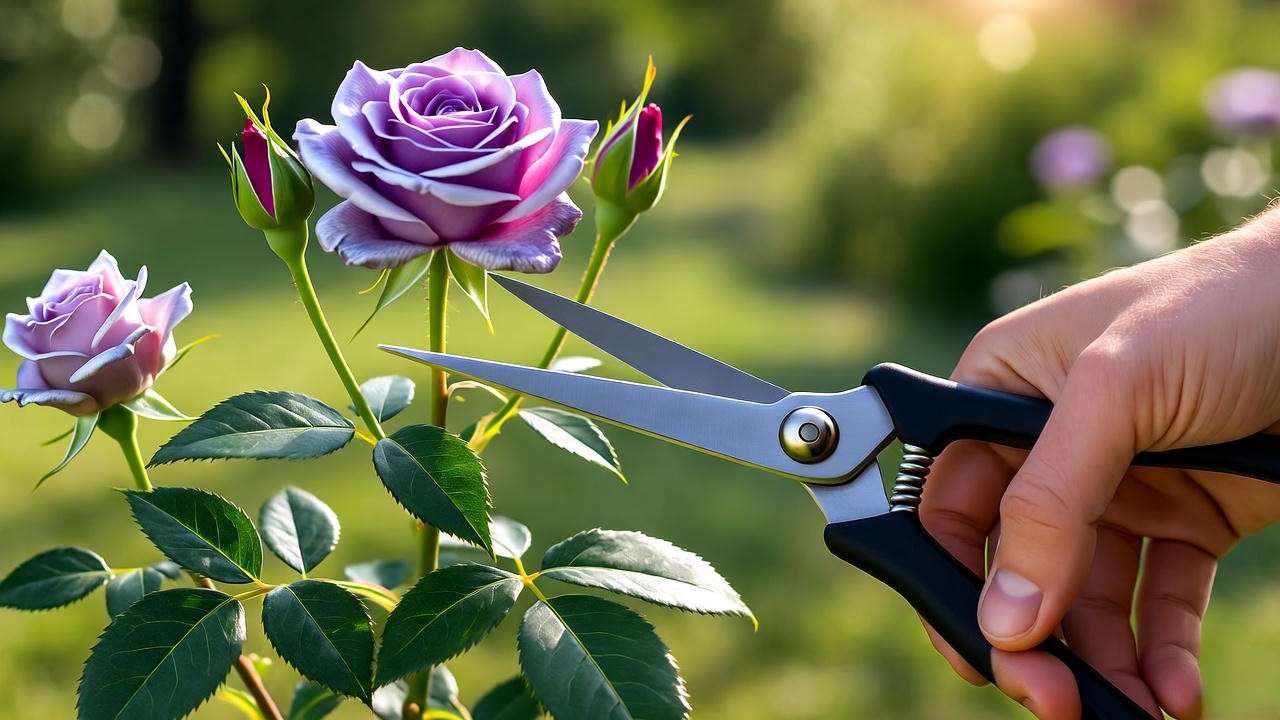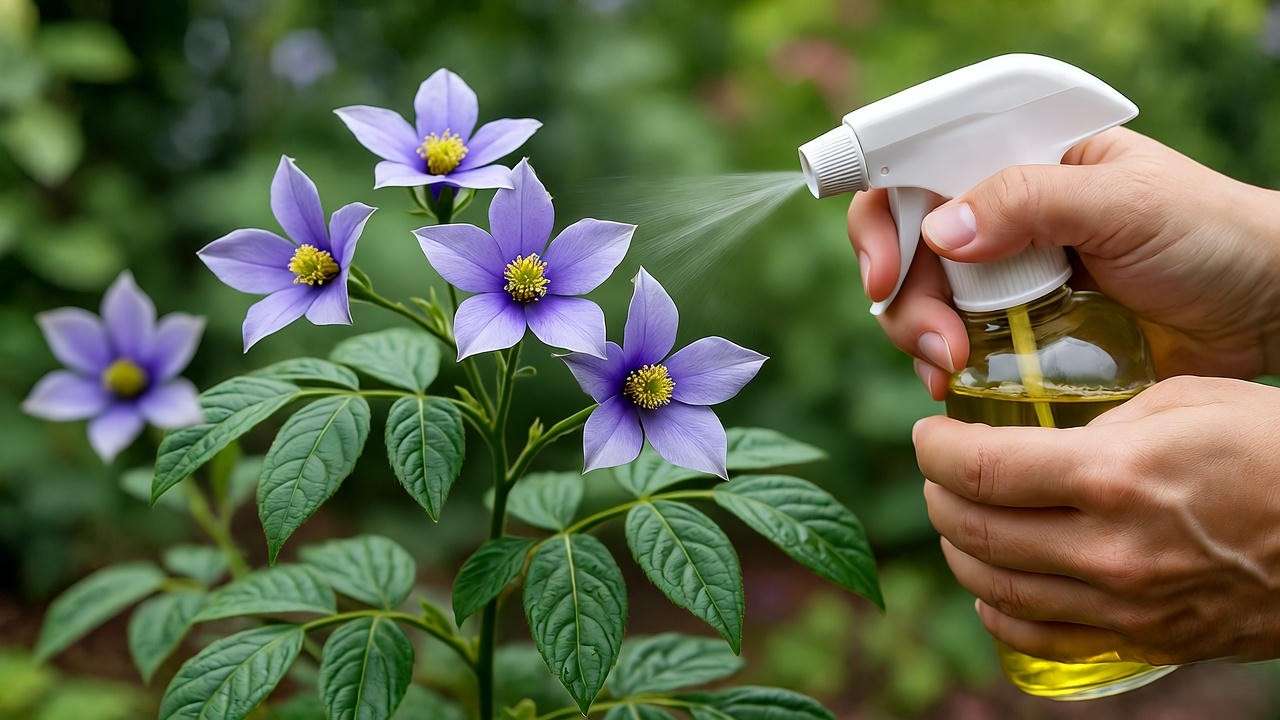Imagine a garden aglow with delicate, silvery-lavender blooms, their soft fragrance wafting through the air. The sterling silver rose plant, a timeless hybrid tea rose, is a showstopper that elevates any garden with its rare beauty and elegance. But this stunning rose isn’t just a pretty face—it demands thoughtful care to thrive. Whether you’re a novice gardener or a seasoned rose enthusiast, mastering the art of caring for your sterling silver rose plant can transform your outdoor space into a floral masterpiece. Many gardeners struggle with its finicky needs, from soil balance to pest control. Fear not! This comprehensive guide, crafted with insights from rose horticulture experts, delivers actionable tips to ensure vibrant blooms and healthy growth. Let’s dive into everything you need to know to make your sterling silver rose plant flourish! 🌿
Understanding the Sterling Silver Rose Plant 🌿
Origins and Unique Characteristics
The sterling silver rose, introduced in 1957 by French hybridizer Francis Meilland, is a hybrid tea rose celebrated for its ethereal silvery-lavender petals—a hue unlike any other in the rose world. Its medium-sized, double blooms (about 4–5 inches wide) unfurl slowly, releasing a sweet, citrusy fragrance that captivates gardeners and passersby alike. Growing to 3–5 feet tall, this rose boasts an upright habit, making it ideal for garden beds, borders, or even containers. Its glossy, dark green foliage contrasts beautifully with its blooms, earning it a cherished spot in ornamental gardens. Fun fact: Its rarity and unique color make it a collector’s gem, often featured in vintage rose catalogs! ✨
Why Proper Care Matters
The sterling silver rose plant is a bit of a diva—gorgeous but sensitive. Without proper care, it’s prone to fading blooms, fungal diseases, or stunted growth. Factors like poor soil, inadequate sunlight, or improper watering can quickly dull its sparkle. But with the right approach, this rose rewards you with long-lasting, vibrant blooms that steal the show. Understanding its needs is key to unlocking its full potential, whether you’re aiming for a single statement plant or a dazzling rose garden. This guide breaks down every step to ensure your rose thrives, backed by decades of horticultural expertise. 🌺
Essential Care Requirements for Sterling Silver Roses 🌞
Choosing the Perfect Location
Location is everything for your sterling silver rose plant. These roses crave 6–8 hours of direct sunlight daily to fuel their vibrant blooms ☀️. A spot with morning sun and afternoon shade is ideal in hotter climates to prevent scorching. Good air circulation is critical to reduce the risk of fungal diseases like black spot. Avoid planting near walls or dense shrubs that trap moisture. If you’re in a region with intense summers, consider a site with dappled afternoon shade. Pro tip: Observe your garden’s sunlight patterns for a week before planting to ensure the perfect spot. Your rose will thank you with abundant blooms!
Soil Preparation and Nutrition
Healthy soil is the foundation of a thriving sterling silver rose. These plants prefer well-draining, loamy soil with a pH of 6.0–6.5. Test your soil with a home kit (available at garden centers) to confirm pH and nutrient levels. Amend clay-heavy or sandy soils with organic matter like compost or aged manure to improve drainage and fertility. Fertilize with a balanced rose fertilizer (10-10-10 NPK) every 4–6 weeks during the growing season (spring to early fall). Organic options, like fish emulsion or bone meal, work wonders too 🧪. Apply mulch (e.g., bark or wood chips) to retain moisture and regulate soil temperature. Expert tip: Avoid fertilizing after August to prevent new growth vulnerable to winter frost.

Watering Best Practices
Watering your sterling silver rose plant correctly is a balancing act. Aim for 1–2 inches of water per week, delivered through deep, infrequent sessions to encourage strong roots. Water at the base, not overhead, to keep foliage dry and prevent fungal issues 💧. Early morning is the best time to water, allowing excess moisture to evaporate. In hot climates, check soil moisture regularly—stick your finger 2 inches deep; if dry, it’s time to water. Mulching with 2–3 inches of organic material helps retain moisture and reduce watering frequency. Overwatering can lead to root rot, so ensure proper drainage. Consistency is key for lush, healthy roses!
Pruning and Maintenance for Healthy Growth ✂️
When and How to Prune
Pruning shapes your sterling silver rose plant and promotes vigorous growth. The best time is late winter or early spring, just before new growth begins (typically February or March in most climates). Use sharp, clean bypass pruners to make angled cuts ¼ inch above an outward-facing bud. Remove dead, damaged, or crossing branches to improve air circulation. Cut back about one-third of the plant’s height to encourage fuller blooms and a sturdy structure. In warmer climates, a lighter prune may suffice. Always sanitize tools between cuts to prevent disease spread. Proper pruning sets the stage for a spectacular blooming season! 🌸

Deadheading for Continuous Blooms
Deadheading—removing spent blooms—keeps your sterling silver rose blooming longer. Snip faded flowers just above a five-leaflet set, using clean shears to avoid damaging the stem. This redirects the plant’s energy into new growth and blooms rather than seed production 🌺. Deadhead every few days during peak blooming (late spring to summer) to maintain a tidy appearance and encourage repeat flowering. Avoid cutting too low, as this can weaken the plant. Done right, deadheading can extend your rose’s blooming season well into fall. It’s a simple task with big rewards!
Seasonal Maintenance Checklist
To keep your sterling silver rose thriving year-round, follow this seasonal checklist:
- Spring: Prune, fertilize, and refresh mulch to kickstart growth. Check for pests as temperatures rise.
- Summer: Monitor for pests like aphids and water consistently. Deadhead regularly for continuous blooms.
- Fall: Reduce watering and stop fertilizing to prepare for dormancy. Remove fallen leaves to prevent disease.
- Winter: In cold climates, mound soil or mulch around the base to protect roots. Wrap stems with burlap in harsh winters ❄️. This routine, tailored to the sterling silver rose’s needs, ensures year-round health and beauty.

Protecting Your Sterling Silver Rose from Pests and Diseases 🐞
Common Pests to Watch For
Sterling silver roses can attract pests like aphids, spider mites, and Japanese beetles. Aphids cluster on new growth, sucking sap and weakening stems. Spider mites, tiny web-spinners, cause stippled leaves in hot, dry conditions. Japanese beetles chew petals and foliage, leaving skeletonized leaves. Combat them with organic solutions like neem oil or insecticidal soap, applied in the early morning. For severe infestations, consider targeted pesticides, but always follow label instructions. Companion planting with marigolds or garlic can deter pests naturally 🌱. Regular inspections catch issues early, keeping your roses pristine.

Managing Fungal Diseases
Fungal diseases like black spot, powdery mildew, and rust are common threats. Black spot causes dark spots and yellowing leaves, thriving in humid conditions. Powdery mildew coats leaves in white powder, while rust leaves orange pustules. Prevent these by ensuring good air circulation and avoiding overhead watering. Treat with organic fungicides like sulfur or potassium bicarbonate, or use chemical fungicides for severe cases. Remove and destroy affected leaves to stop the spread. Expert insight: Overwatering and poor spacing often exacerbate fungal issues, so prioritize proper care practices.
Proactive Prevention Strategies
Prevention is better than cure for sterling silver roses. Keep the area around your plant clean by removing fallen leaves and debris, which harbor pests and pathogens. Space plants 3–4 feet apart to improve airflow. Use drip irrigation to keep foliage dry, reducing fungal risks. Regularly inspect leaves and stems for early signs of trouble. Healthy plants are more resilient, so maintain consistent watering, fertilization, and pruning. A proactive approach minimizes problems and keeps your roses thriving 🌿.
Troubleshooting Common Sterling Silver Rose Problems 🛠️
Why Aren’t My Roses Blooming?
Few things are more frustrating than a sterling silver rose plant that refuses to bloom. Common culprits include insufficient sunlight, improper pruning, or nutrient deficiencies. Roses need 6–8 hours of direct sun daily; less than that can halt flowering. Over-pruning or cutting at the wrong time may remove bud-forming stems. Test your soil to check for low nitrogen or potassium levels, which fuel blooms. Solutions include relocating the plant to a sunnier spot, adjusting pruning techniques, and applying a phosphorus-rich fertilizer (e.g., 5-10-5 NPK). Patience is key—roses may take a season to recover. Regular care will bring those lavender blooms back! 🌺
Yellowing Leaves and Drooping Stems
Yellowing leaves or drooping stems signal distress in your sterling silver rose. Overwatering can suffocate roots, causing yellow, wilting foliage. Conversely, underwatering stresses the plant, leading to droopy stems. Pests like aphids or spider mites may also be to blame. Check soil moisture: if soggy, improve drainage and reduce watering. If dry, water deeply and consistently. Inspect for pests and treat with neem oil if needed. Ensure proper fertilization, as nutrient imbalances can cause yellowing. For persistent issues, take a leaf sample to a local nursery for diagnosis. Quick action restores your rose’s vitality! 🌿
Reviving a Struggling Plant
A struggling sterling silver rose can often be saved with care. Start by assessing root health: gently dig around the base to check for rot or dryness. If roots are mushy, trim affected areas and repot in fresh, well-draining soil. For potted roses, ensure the container has drainage holes. Adjust watering and fertilization to optimal levels. If the plant shows no improvement after a month, consult a local extension service or nursery for expert advice. Sometimes, a fresh start with a new plant is best, but most roses bounce back with TLC. 🌱
Expert Tips for Maximizing Bloom Quality and Longevity 🌟
Want your sterling silver rose plant to steal the show? Try these advanced techniques from rose horticulturists. Pinching—removing the tips of new shoots—encourages larger, more vibrant blooms. For climbing or trellis displays, train stems horizontally to promote flowering along the length. Cut roses for vases early in the morning, choosing buds just starting to open, and make angled cuts to preserve plant health 💐. Companion planting with lavender or catmint enhances aesthetics and deters pests. According to Dr. Emily Carter, a rose specialist with the American Rose Society, “Consistent care and attention to soil health are the secrets to show-stopping sterling silver roses.” These tips elevate your garden to the next level!

FAQs About Sterling Silver Rose Care ❓
Q1: How often should I fertilize my sterling silver rose plant? Fertilize every 4–6 weeks during the growing season (spring to early fall) with a balanced rose fertilizer (10-10-10 NPK). Stop in late summer to avoid frost-sensitive growth. Organic options like compost tea work well too.
Q2: Can sterling silver roses grow in containers? Yes! Choose a container at least 18 inches deep with drainage holes. Use a high-quality potting mix and ensure 6–8 hours of sunlight. Water more frequently than in-ground plants, as containers dry out faster.
Q3: What’s the best way to overwinter my rose in cold climates? Mound soil or mulch 8–12 inches high around the base to insulate roots. Wrap stems with burlap in harsh winters. Avoid pruning in fall to protect against cold damage ❄️.
Q4: Why do my rose petals look faded or discolored? Fading may result from too much sun, nutrient deficiencies, or fungal diseases. Ensure proper fertilization and check for black spot or powdery mildew. Partial shade in hot climates helps maintain color.
Q5: Are sterling silver roses deer-resistant? Unfortunately, no. Deer love roses. Use fencing, deer-repellent sprays, or companion plants like rosemary to deter them.
Conclusion: Your Path to a Thriving Sterling Silver Rose Plant 🌼
Caring for your sterling silver rose plant doesn’t have to be daunting. With the right approach—ample sunlight, well-draining soil, consistent watering, proper pruning, and vigilant pest control—you’ll unlock a cascade of silvery-lavender blooms that transform your garden. This guide, rooted in decades of horticultural expertise, equips you to tackle common challenges and nurture a healthy, vibrant rose. Whether you’re a beginner or a seasoned gardener, these tips ensure success. Ready to see your roses shine? Apply these strategies and share your blooming masterpieces on social media! Have questions? Drop them in the comments—we’re here to help you grow! 🌸













